
Wutai Shan Scenic Area
Wutai Shan (or Five Plateau Mountain) refers to Buddhism’s sacred northern mountain range in Shanxi Province. The area is considered the earthly abode of Manjusri, the Bodhisattva of Wisdom. It’s a popular pilgrimage destination for Buddhists and Chinese tourists alike.
The five peaks form a valley that contains fifteen temples and a small town called Táihuái. There’s not much to Táihuái, apart from cheap hotels, tourist restaurants and religious artefact shops. The town is pretty dead, and a rare visiting foreigner seems to be the days amusement for most of the inhabitants.

The surrounding hillsides contain another thirty temples and many more under construction.
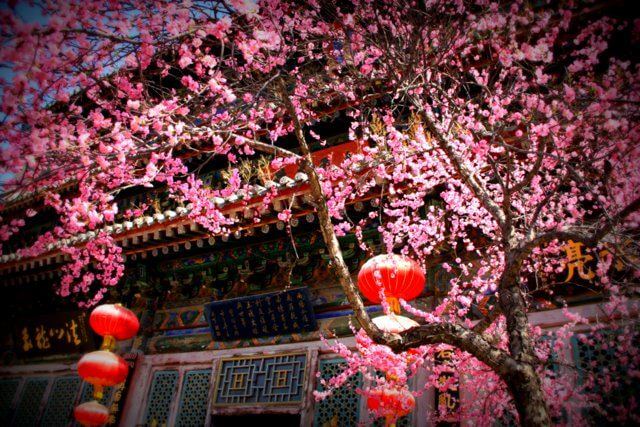
Xiantong Temple - the temples are surrounded by pink cherry and peach trees
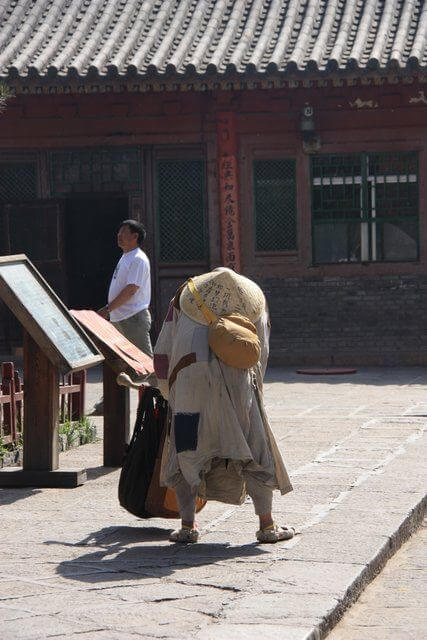
Renegade Monk
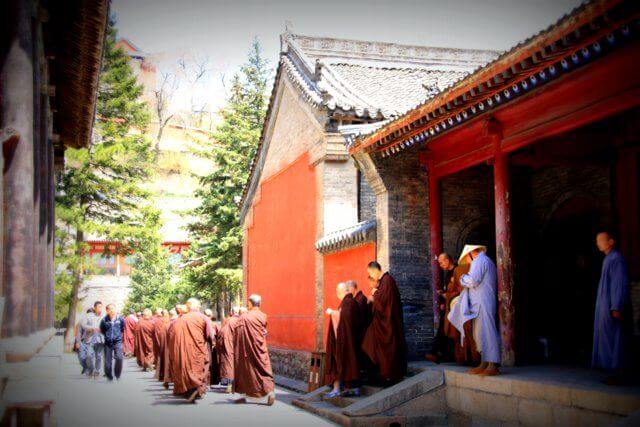
Monks about to get angry
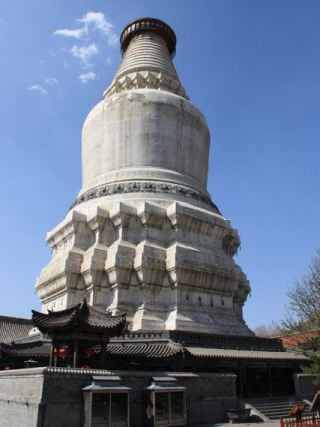
Tayuan Temple Stupa
Tayuan Temple
The main stupa at the Tayuan temple has become the symbol of the temple area. Pilgrims come to walk it’s circumference, spinning the numerous prayer wheels.
Not everything is peaceful here. After the local monks left their meeting they discovered a ragged-looking monk from another temple praying outside the scripture hall. I expected them to welcome him and offer sustenance, but instead they surrounded him shouting and waving sticks. The visiting monk was declared a renegade and a pilgrim who offered him water was also berated as encouraging him.
I obviously don’t know the full story, but it didn’t look particularly religious to the casual observer.
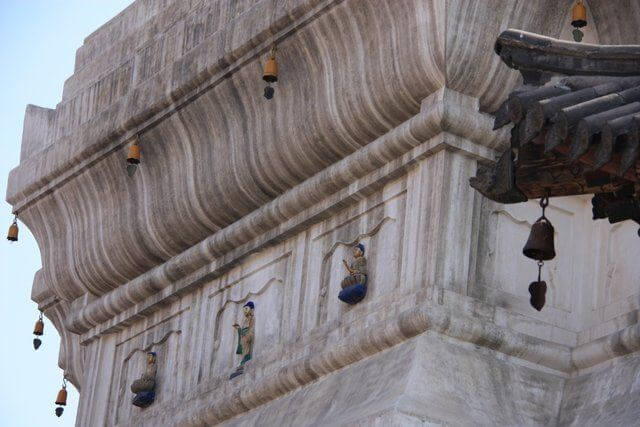
Tayuan Temple Stupa Detail
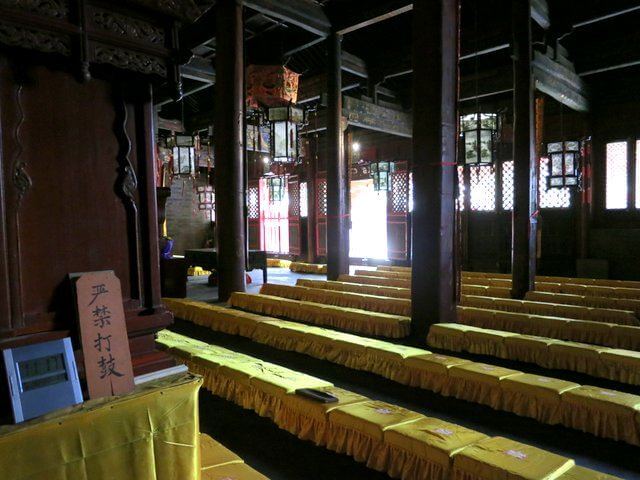
The interior of the scripture hall
The Beamless Hall
Further inside Xingtong Temple is the Beamless Hall. This area if famed for containing some of the oldest wooden buildings in China, so entering the Beamless hall was quite a surprise. The walls and high roof are built from deep layers of bricks, reminiscent of the churches in Eastern Europe.
Inside is another Buddha, a small golden pagoda and rows of rather unnerving monk mannequins.
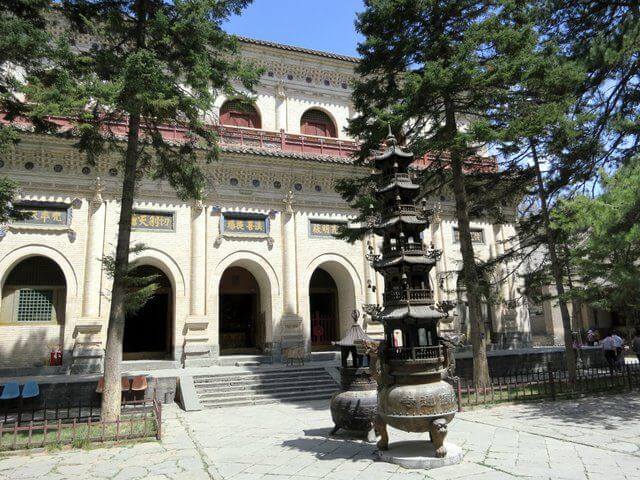
The Beamless Temple
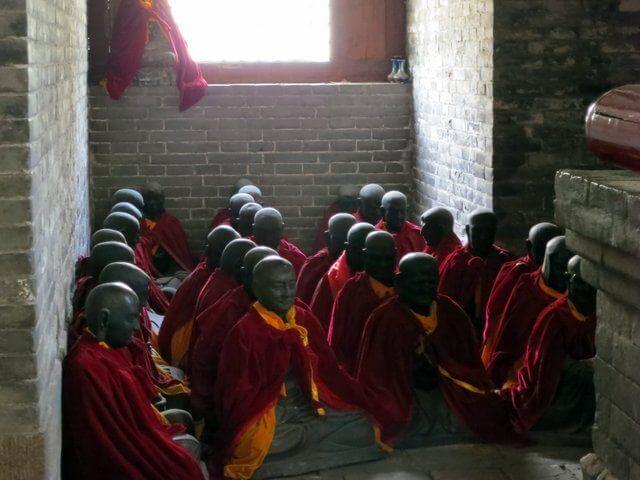
Inside the Beamless Temple visitors are watched by rows of monks
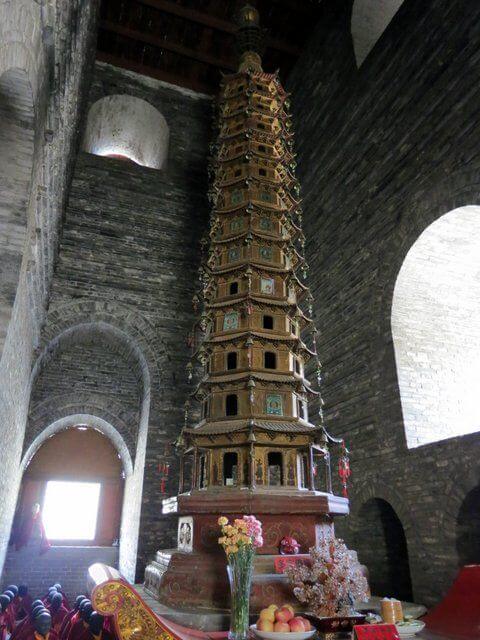
The pagoda and even more monks inside the Beamless Temple
Hall of Manjusri
The final building at ground level is the Hall of Manjusri.
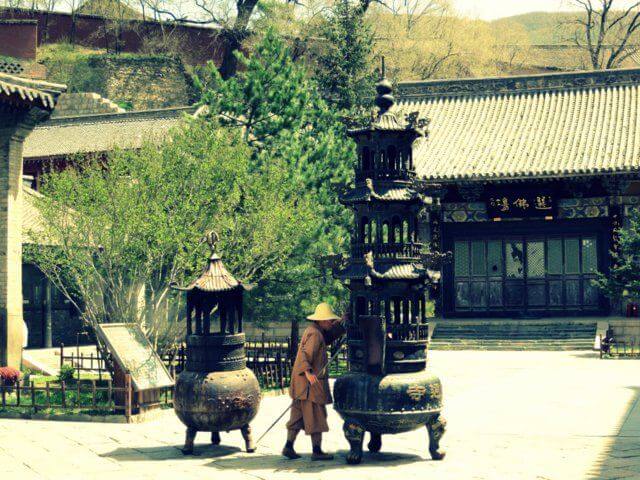
Monk tending the braziers outside the Hall of Manjusri
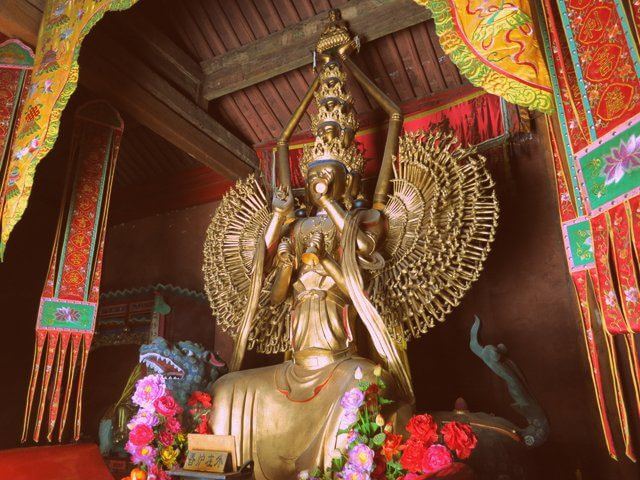
The 15-faced, 1000-armed Bodhisattva
The Bronze Hall
After the Hall of Manjusri the temple climbs up to the Bronze Hall, surrounded by numerous small pagodas.
The Bronze Hall is a 5 metre high, 50 tonne miniature replica of a Ming pavilion made in 1606 and gilded in gold. It contains 10,000 mini-Buddha and a snoring monk.
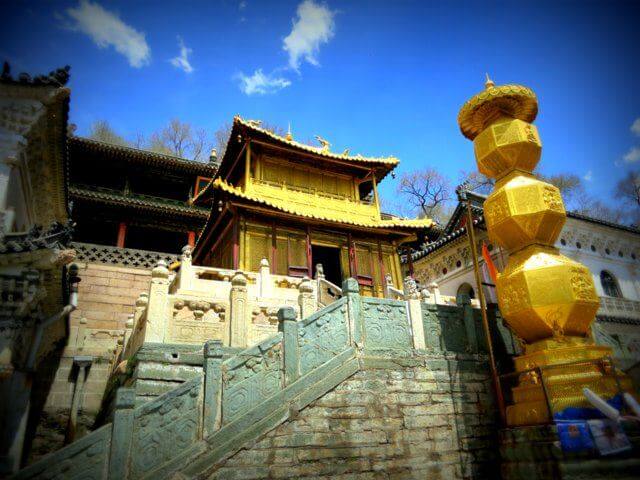
Bronze Hall
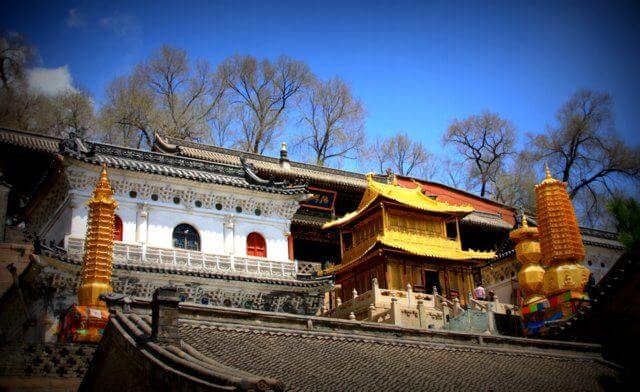
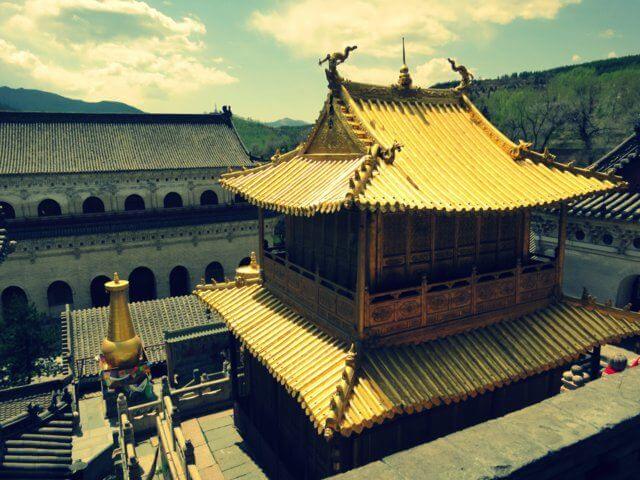
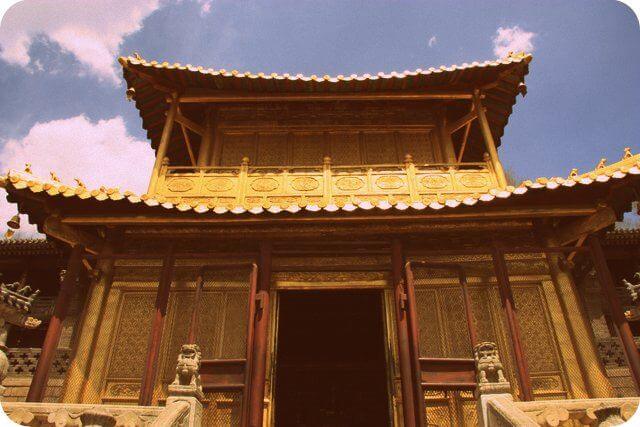
From up by the Bronze Hall it’s possible to look down over the rooftops at the surrounding temples.
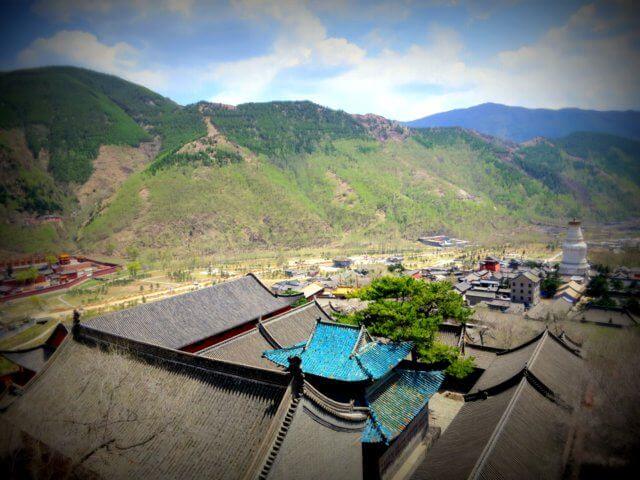
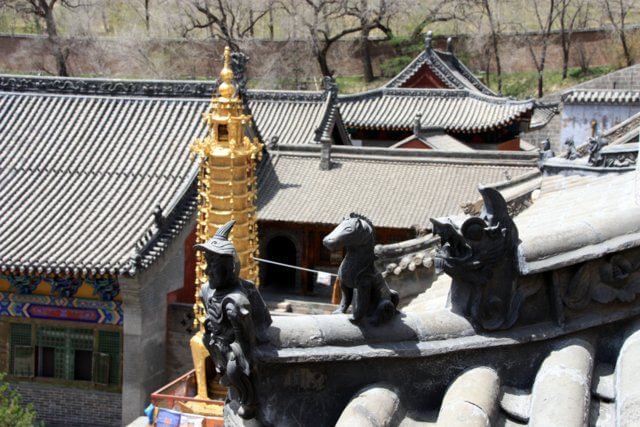
Pusa Ding
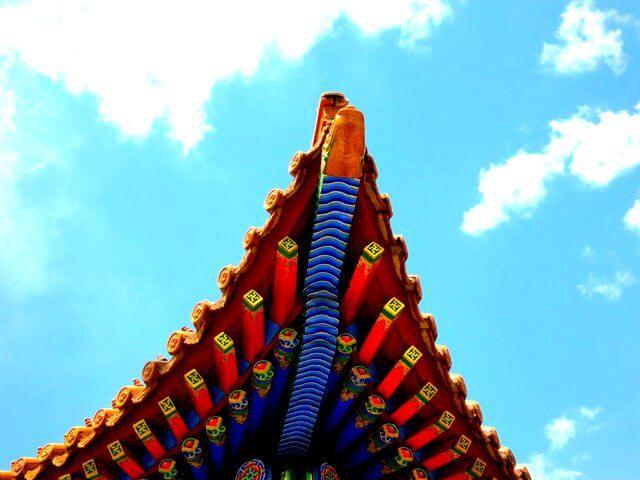
Newly painted temple atop Pusa Ding
There are 108 steps up to Pusa Ding, 108 being the number of beads on a Buddhist rosary
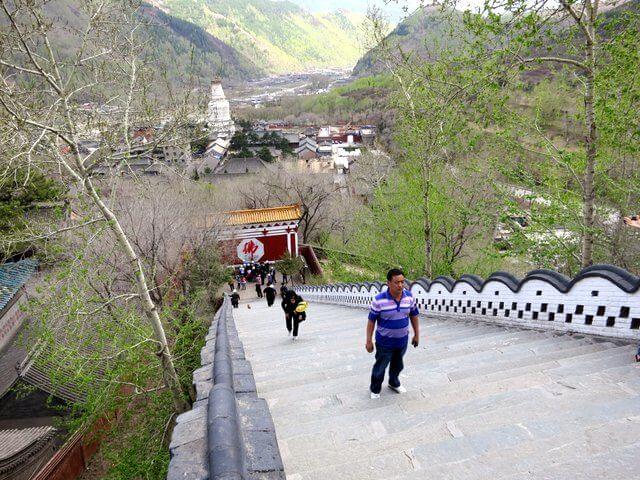
The 108 steps up to Pusa Ding
Having finished climbing from the top to the bottom of the temple complex, we finally reached the cook house. The wok below is five feet across, and the room contains four – enough to cater for all the temples inhabitants.
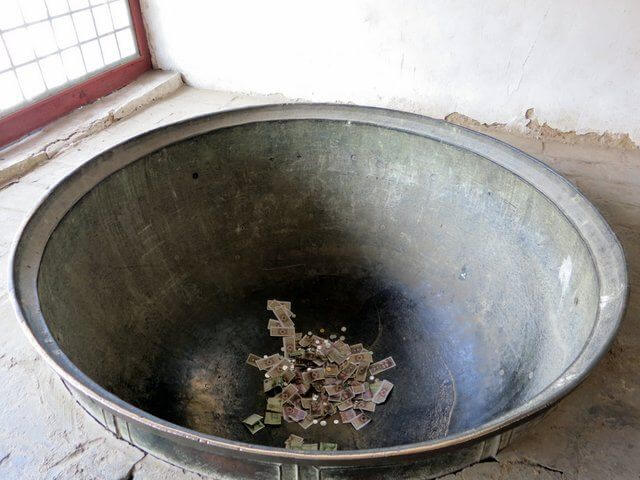
Giant Wok
See the previous post for Wutai Shan entrance fees and visitor tips






Pingback: (@BlogExpat) (@BlogExpat)
Beautiful. I like the story about the crazy monks. It’s rare that you hear stories about them waving sticks wanting to hit them. Amazing shots!
Pingback: Our Oyster (@our_oyster)
If anyone wants a Chinese version, it’s here, hotlinked images and all: http://www.ltaaa.com/wtfy/4522.html
Great photos! I was in Wu Tai Shan some time ago. Definitely impressive, but yeah I remember one funny story. When I was looking at a Tibetan monk prostrating himself on the ground he turned around and asked me for cash. No comment.